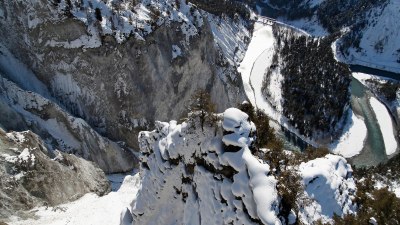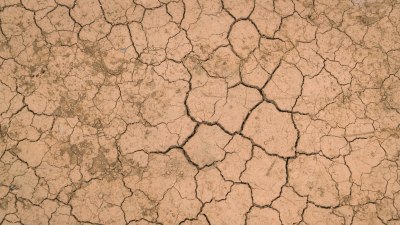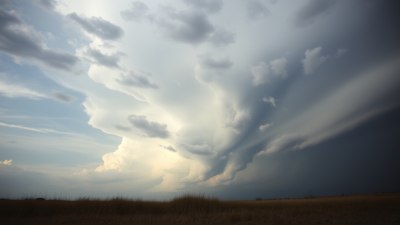The Secret Role of Tiny Aerosols in Making Clouds Form
Explore how tiny aerosols contribute to cloud formation and the intricate processes involved in weather patterns.

Image by Mateus-Andre on Freepik
Clouds are an essential part of our planet's weather system, influencing temperature, precipitation, and climate. However, the intricate processes leading to cloud formation are often overlooked, especially the role that tiny particles known as aerosols play in this dynamic phenomenon. In this article, we will delve into the secret role of tiny aerosols in making clouds form, detailing their origins, types, and how they affect global climate and weather patterns.
Aerosols are microscopic particles suspended in the atmosphere that come from various natural and anthropogenic sources. They can be made up of dust, pollen, soot, sea salt, and even sulfuric acid. These tiny constituents play a critical role in the formation of clouds by serving as cloud condensation nuclei (CCN). Without these nuclei, moisture in the atmosphere would have trouble coalescing to form droplets, ultimately leading to the formation of clouds.
Aerosol Formation
The formation of aerosols can occur through various processes. Natural sources such as volcanic eruptions emit ash and gases, which can transform into aerosols. Ocean spray produces sea salt aerosols, while vegetation releases organic compounds that can oxidize and contribute to secondary aerosol formation. On the other hand, human activities like fossil fuel combustion and industrial processes also generate significant aerosol pollution. Understanding these sources helps researchers evaluate the balance of natural versus anthropogenic aerosols in the atmosphere.
Cloud Condensation Nuclei
Cloud condensation nuclei are crucial for cloud formation. These tiny particles provide the surface upon which water vapor condenses to form liquid droplets. The presence of CCN affects the number and size of droplets within clouds, which in turn influences the cloud's optical properties and lifespan. The relationship between aerosol concentration and cloud droplet formation hints at a complex interaction that has profound implications for climate and weather.
The Impact of Aerosols on Cloud Properties
Aerosols can alter cloud properties in several ways. Increased aerosol concentrations can lead to more numerous but smaller cloud droplets, a phenomenon known as the Twomey effect. This results in clouds that are more reflective and longer-lasting, thereby impacting global radiative forcing. Furthermore, clouds influenced by aerosols can affect precipitation patterns, leading to reduced rainfall in some areas and increased rainfall in others. The variability introduced by changing aerosol concentrations is a subject of ongoing research in atmospheric sciences.
Aerosols and Climate Change
The interaction between aerosols and clouds has significant implications for climate change. While aerosols can act as a cooling agent by reflecting sunlight, their presence in the atmosphere can also lead to warming effects by influencing cloud properties and patterns. For example, while the overall cooling effect from aerosols has been observed, their complex relationship with clouds can intensify global warming in specific scenarios. Future climate models must incorporate these interactions to accurately predict climate outcomes.
Case Studies on Aerosols and Cloud Formation
Several case studies have demonstrated the impact of aerosols on cloud formation across different geographical regions. In heavily industrialized areas, high levels of particulate matter have led to the formation of persistent, low-lying clouds that can contribute to urban climate challenges. Conversely, remote areas, such as the Amazon rainforest, show how natural aerosols generated by vegetation can promote cloud formation and precipitation. These examples highlight the diverse behaviors of aerosols and their vital role in the water cycle.
Monitoring Aerosols
Researchers employ a variety of methods to monitor and study aerosols in the atmosphere. Satellite observations provide valuable insights into aerosol distribution and concentration, allowing scientists to assess their impact on cloud formation and climate. Ground-based measurements complement satellite data by offering detailed local observations. This combined approach helps to improve our understanding of aerosols and their interactions with clouds.
Future Research Directions
The study of aerosols and their role in cloud formation remains an evolving field. Future research directions will focus on improving models that simulate aerosol-cloud interactions, particularly under varying climate conditions. Investigating the effects of specific aerosol types on cloud microphysics will also be crucial. Furthermore, understanding the feedback loops between aerosol concentrations, cloud properties, and climate change will be paramount for developing effective climate mitigation strategies.
Aerosols, though tiny in size, play a significant role in atmospheric processes and cloud formation. Their presence influences cloud properties, precipitation patterns, and ultimately contributes to climate dynamics. As we continue to study these small yet mighty particles, it becomes increasingly clear that understanding aerosols is critical for addressing climate change and predicting our planet's weather patterns. A comprehensive approach that considers the intricate interactions of aerosols and clouds will pave the way for better climate models and informed environmental policies.











